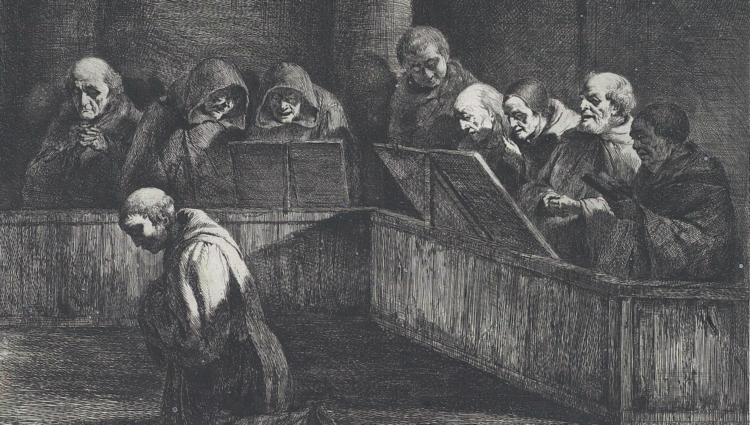 One longstanding Church practice oriented to the worship of God has been the chanting of psalms and hymns. From the earliest times, monks engaged in liturgical chanting that complemented their often grueling lives. These monks managed to accommodate hours spent in choir while providing for their material needs.
One longstanding Church practice oriented to the worship of God has been the chanting of psalms and hymns. From the earliest times, monks engaged in liturgical chanting that complemented their often grueling lives. These monks managed to accommodate hours spent in choir while providing for their material needs.
In his French-language book, Pourquoi Mozart, author Dr. Alftred Tomatis tells the fascinating story of how he discovered the “secret” of the monks’ vigor amid their rigorous schedule.
Dr. Tomatis, an ear specialist, recounts how a particular French monastery had followed St. Benedict’s rule for centuries, which entailed several hours of chant a day.
After the Second Vatican Council in the sixties, the monks changed their centuries-old practices. They stopped chanting in Latin and explored the possibility of continuing their chant in the vernacular. When no agreement was reached on how to do this, they decided to stop chanting altogether and replace it with more updated and perhaps more “pastoral” ministries in line with the reforms.
The new schedule had major consequences on the lives of the monks. For centuries, Benedictines have thrived with little sleep. These monks now became fatigued and listless. Even when given more hours of sleep, they continued to be constantly tired.
A decision was made to change the centuries-old vegetarian diet to include meat in the hopes of giving the monks more energy. However, their health did not improve. There seemed to be no way to find the cause of their problems, and the proposed solutions only seemed to make matters worse.
At this point, Dr. Tomatis visited the monastery to test the monks’ hearing. He was surprised to see that many of them suffered from hearing impediments. Upon examining the sequence of changes, he determined the only change related to hearing was the cessation of chanting the psalms together in choir.
He recommended that the chanting resume to see if their conditions might change.
When the monks returned to their old routine of chanting the hours of the office, they experienced an amazing transformation. Most of them became energized and could function again with little sleep. They did not need the new diet. Gregorian chant sufficed to fix their health problems.
In an interview on a Canadian radio station, Dr. Tomatis explained what had happened from his professional perspective. He has long studied the effects of sounds and frequencies on a person. He said the cerebral cortex can become “charged” or positively stimulated by sounds like Gregorian chant.
Thus, he held that the daily chanting sessions brought energy to the monks’ bodies and minds. The regularity and rhythms of the chants have an impact that orders the monk and allows him to do extraordinary things.
Of course, the physical effects of the music are only part of the story. However, it is a fascinating part in an unbelieving world that values only material benefits. Other experts have also studied the effects of chant and found that it can lower blood pressure and help reduce anxiety and depression.
However, the real story is the spiritual impact of the chanting upon the soul. Such music is supernatural in that it lifts the person up toward heaven and the things of God. Its beauty fills the souls with admiration and love of God. When the practices of Faith put the soul in order, the body naturally becomes ordered.
The real conclusion from this story is not how Gregorian chant can serve as a health aide. It is that putting the soul in order should be the first priority. Afterward, everything falls into place.
The Imaginative Conservative applies the principle of appreciation to the discussion of culture and politics—we approach dialogue with magnanimity rather than with mere civility. Will you help us remain a refreshing oasis in the increasingly contentious arena of modern discourse? Please consider donating now.
The featured image is “Monks Chanting” (1795), by Jean-Jacques de Boissieu. This file is made available under the Creative Commons CC0 1.0 Universal Public Domain Dedication, courtesy of Wikimedia Commons.









